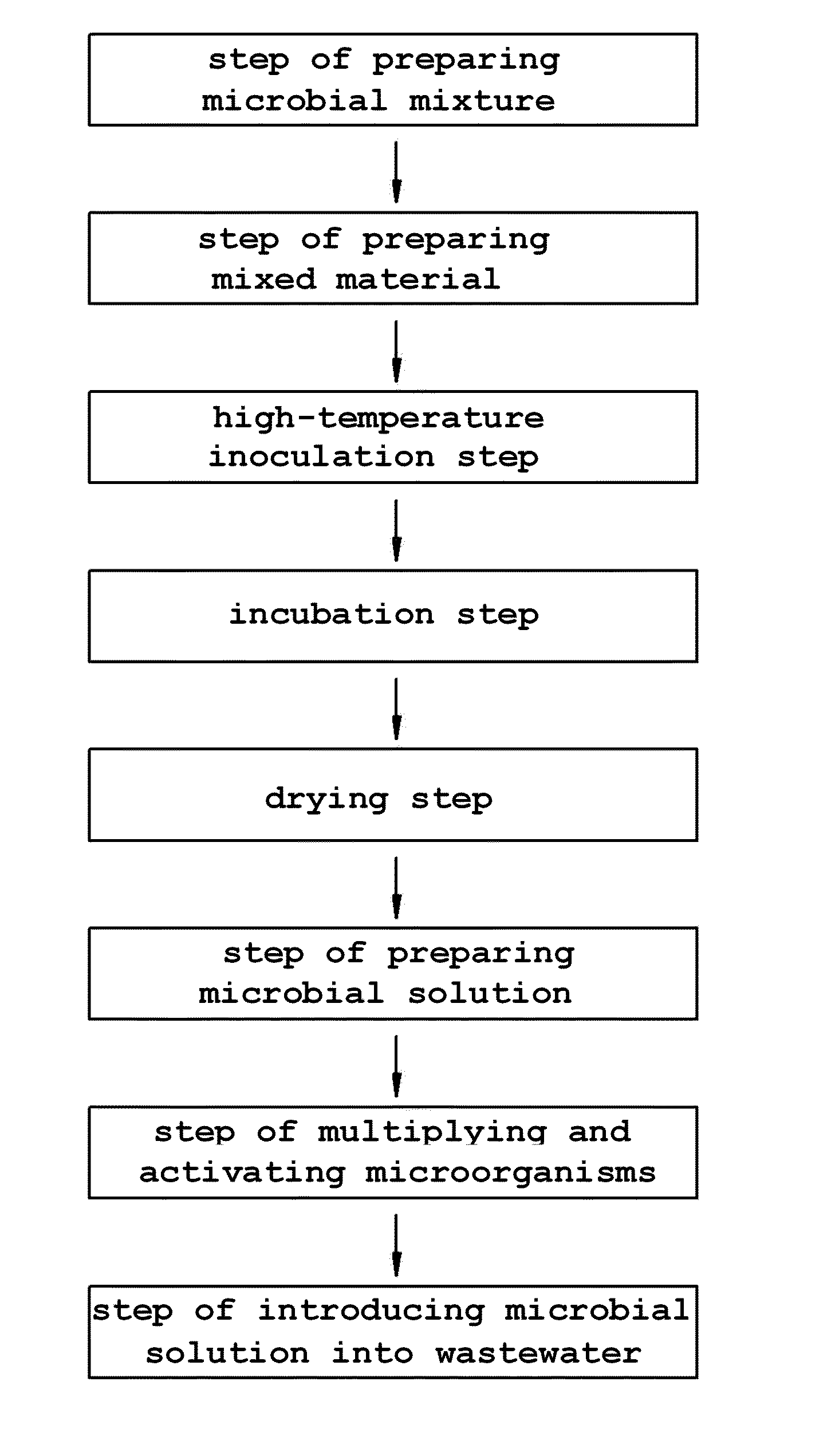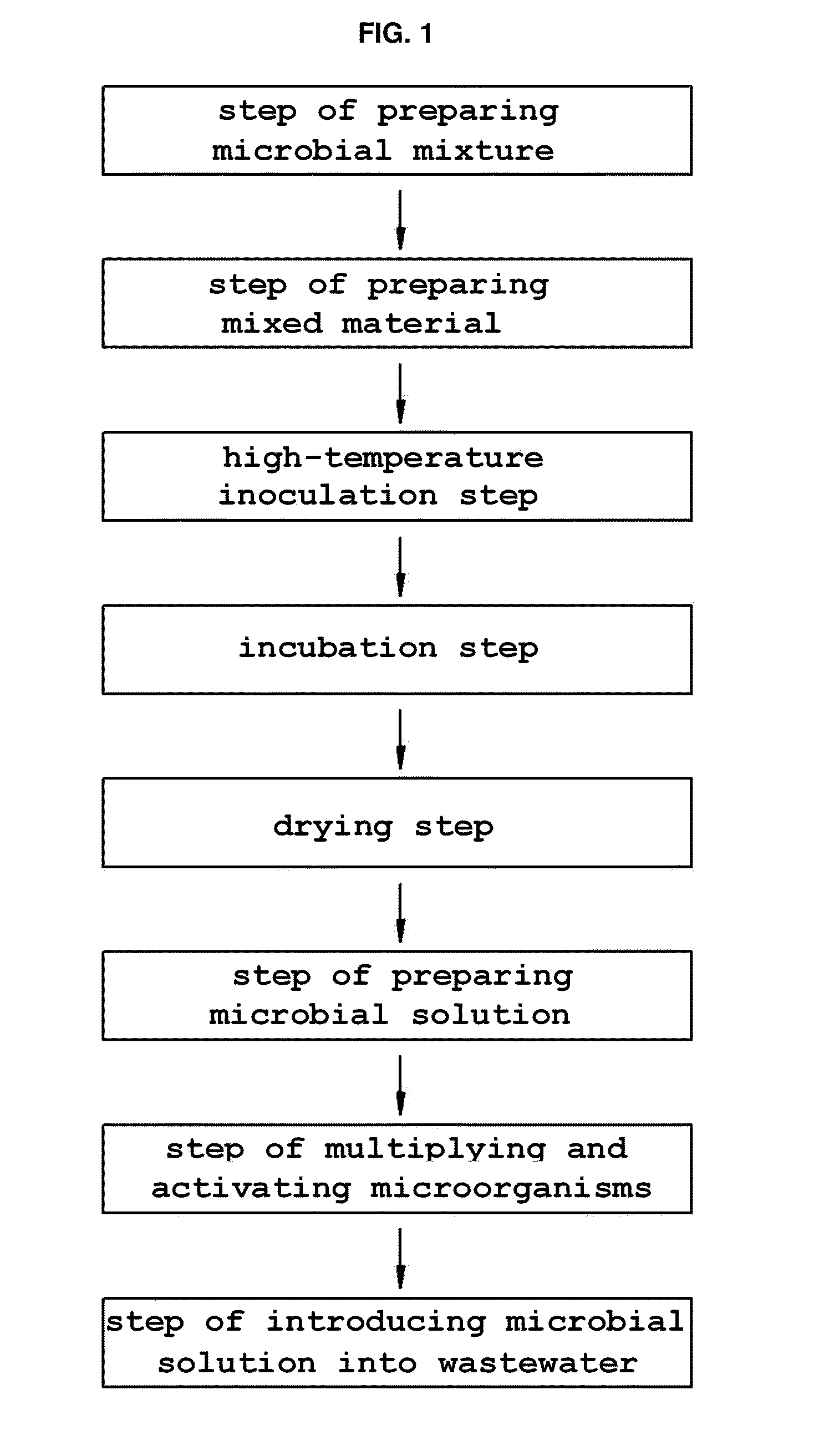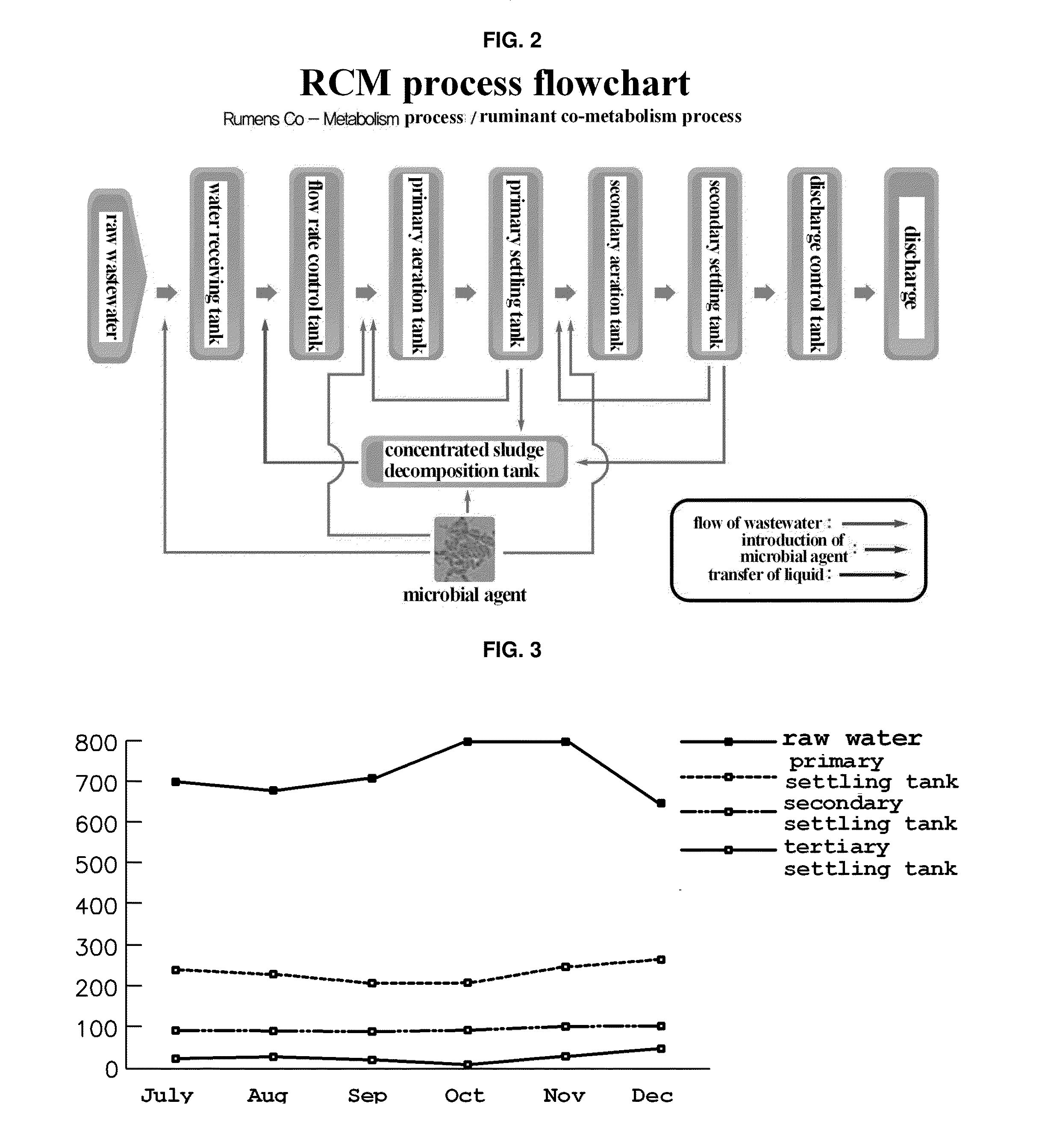Biological treatment method and waste-water treatment agent for refractory wastewater
a biological treatment method and wastewater technology, applied in the field of biological treatment of sewage, wastewater, tannery wastewater and livestock manure, can solve the problems of high cost of generated sludge treatment, serious water contamination caused by thereby, and inability to meet the discharge limits of current technologies. , the effect of reducing the generation of offensive odors
- Summary
- Abstract
- Description
- Claims
- Application Information
AI Technical Summary
Benefits of technology
Problems solved by technology
Method used
Image
Examples
example 1
Culture of Microbial Mixture
[0049]A microorganism-containing soil sample (bamboo humus, pine tree humus, oak waste, or broad-leaved tree humus) was heat-treated at 60° C. for 30 minutes, and then ground finely with a mortar and pestle. Then, 1 g of the sample was taken, suspended in 9 ml of 0.85% NaCl and diluted by a factor of 100 to 10-6. 100 μl of each of the diluted suspensions was plated on TSA, BL, and BBL media (DIFCO) and cultured at 28° C., thereby culturing the microbial mixture.
example 2
Preparation of Wastewater Treatment Agent
[0050]0.05 kg of the microbial mixture (BM-S-1) cultured as described above, 0.2 kg of powdery chaff, 0.2 kg of powdery peat moss, 2.5 kg of molasses and 0.1 kg of shiitake mushroom waste wood powder were mixed with potable water to a total weight of 100 kg. The mixture was maintained at 15 to 28° C. while air was introduced therein at a rate of 60 cm3 / min for 3 days (aeration) and the aeration process was stopped for a period of 3 days. The aeration process and the non-aeration process were repeatedly performed for 30 days, thereby preparing a liquid microbial agent. The total cell count of the liquid microbial agent was 2.8×109 cfu / g.
[0051]Meanwhile, 45 kg of crushed chaff and 45 kg of peat moss powder were placed in a shaking incubator and mixed for 30 minutes. 10 kg of the liquid microbial agent was added to the mixed material to obtain a culture medium, and the culture medium was adjusted to a water activity of 50-60%, after which the so...
PUM
 Login to View More
Login to View More Abstract
Description
Claims
Application Information
 Login to View More
Login to View More - R&D
- Intellectual Property
- Life Sciences
- Materials
- Tech Scout
- Unparalleled Data Quality
- Higher Quality Content
- 60% Fewer Hallucinations
Browse by: Latest US Patents, China's latest patents, Technical Efficacy Thesaurus, Application Domain, Technology Topic, Popular Technical Reports.
© 2025 PatSnap. All rights reserved.Legal|Privacy policy|Modern Slavery Act Transparency Statement|Sitemap|About US| Contact US: help@patsnap.com



